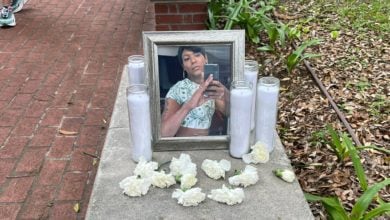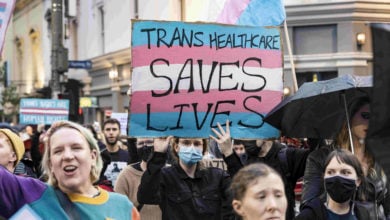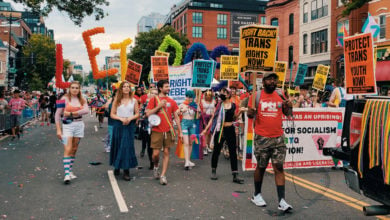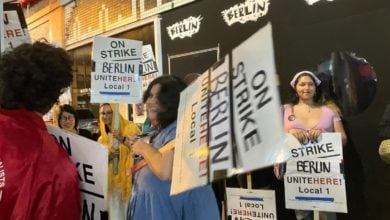The movement for marriage rights for same-sex couples saw a watershed legal victory on May 17, 2004, when Massachusetts became the first state to legalize same-sex marriage.
 |
Just three months prior to that day, the city of San Francisco briefly issued marriage licenses. And since that defining day in May, additional legal victories have been won.On Oct. 25, 2006, the New Jersey Supreme Court ruled it was a violation of the state constitution to deny same-sex couples marriage rights. Legislation passed in New Jersey later that year, on Dec. 14, providing for same-sex civil unions.
In response to the success of this movement, anti-LGBT campaigns led by reactionary social forces have passed legislation in over one dozen states defining marriage as a union between a woman and a man. While these legislative efforts have galvanized right-wing, anti-LGBT forces, they will fail to reverse progress made by the lesbian, gay, bisexual and transgender community for same-sex marriage rights.
A little more than a year after the enactment of civil unions in New Jersey, the marriage equality movement is looking towards another court decision that will add to the rulings in favor of same-sex marriage rights. The California Supreme Court is due to hear oral arguments on March 4 in a case known as In re Marriage Cases that could result in the a legal ruling that supports same-sex marriage in the state of California.
According to a posting on the Equality California website, this case is one of most heavily briefed cases in the court’s history. Over 250 friend-of-the-court briefs in favor of same-sex marriage rights have been filed by an array of national civil rights organizations and cities and counties in California. The list includes the National Gay & Lesbian Task Force, Howard University School of Law Civil Rights Clinic, Southern Poverty Law Center, Mexican American Legal Defense & Education Fund, the NAACP, and the cities of Los Angeles, San Diego, San Jose, Sacramento and Oakland.
This year will mark the 60th anniversary of the 1948 California Supreme Court ruling that struck down anti-miscegenation laws that banned interracial marriage. The briefs filed by the Howard University School of Law Civil Rights Clinic and the national and California NAACP have urged the court to apply the reasoning from its 1948 decision to the issue of same-sex marriage.
There is great scrutiny of this case. This is reflected in the fact that the arguments will air live on television. Within the LGBT community, people are planning to watch collectively. The California Supreme Court usually issues rulings within 90 days of hearing oral arguments.
Struggle from coast to coast
While on the West Coast the LGBT community will await the Supreme Court ruling, on the East Coast a series of hearings were held on the impact of legalizing civil unions for LGBT people in New Jersey. The New Jersey Civil Union Review Commission, established by the state legislature when it enacted civil union laws, convened the hearings.
Although the enactment of civil union legislation is a progressive step forward in recognizing same-sex relationships, testimony showed it does not guarantee the same benefits or treatment by public institutions and employers as married couples.
One woman, a nurse, testified she was denied medical coverage for her partner of 12 years because the hospital where she worked for 26 years used a federal loophole to deny coverage—one that could not have been applied if she and her partner were married.
However the California Supreme Court rules or whether New Jersey enacts marriage equality or not, the decisive struggles for same-sex marriage rights will not be determined by judges and legislators inside courtrooms and capitol buildings. The LGBT community and its supporters, organized into a grassroots movement that marches in the streets demanding full equality, will be the main catalyst for change.
The narrow definition of the family with a female homemaker, a male wage earner, and two kids is a fantasy that is more commonplace on television reruns from the 1950s than the general everyday living experience.
This is a result of the capitalist class introducing new technologies into all aspects of production, both manufacturing and services. Instead of making life easier for workers, the capitalists have used greater productivity to drive down wages. This has made it impossible for a single wage earner to support a family.
Marriage equality has support within significant sectors of society because the reality of what constitutes a family is more diverse today than two or three generations ago. The existence of intergenerational households, two-wage-earner households, and single-head-of households has changed the perception in society of what is a family. Additionally, the integration of women into the workforce has challenged and reshaped views on child rearing, marriage and family.
All these changes, along with the impact of the modern LGBT movement, have changed societal views of homosexuality. This has laid the basis for the acceptance of same-sex couples and, eventually, full marriage equality for LGBT people.





